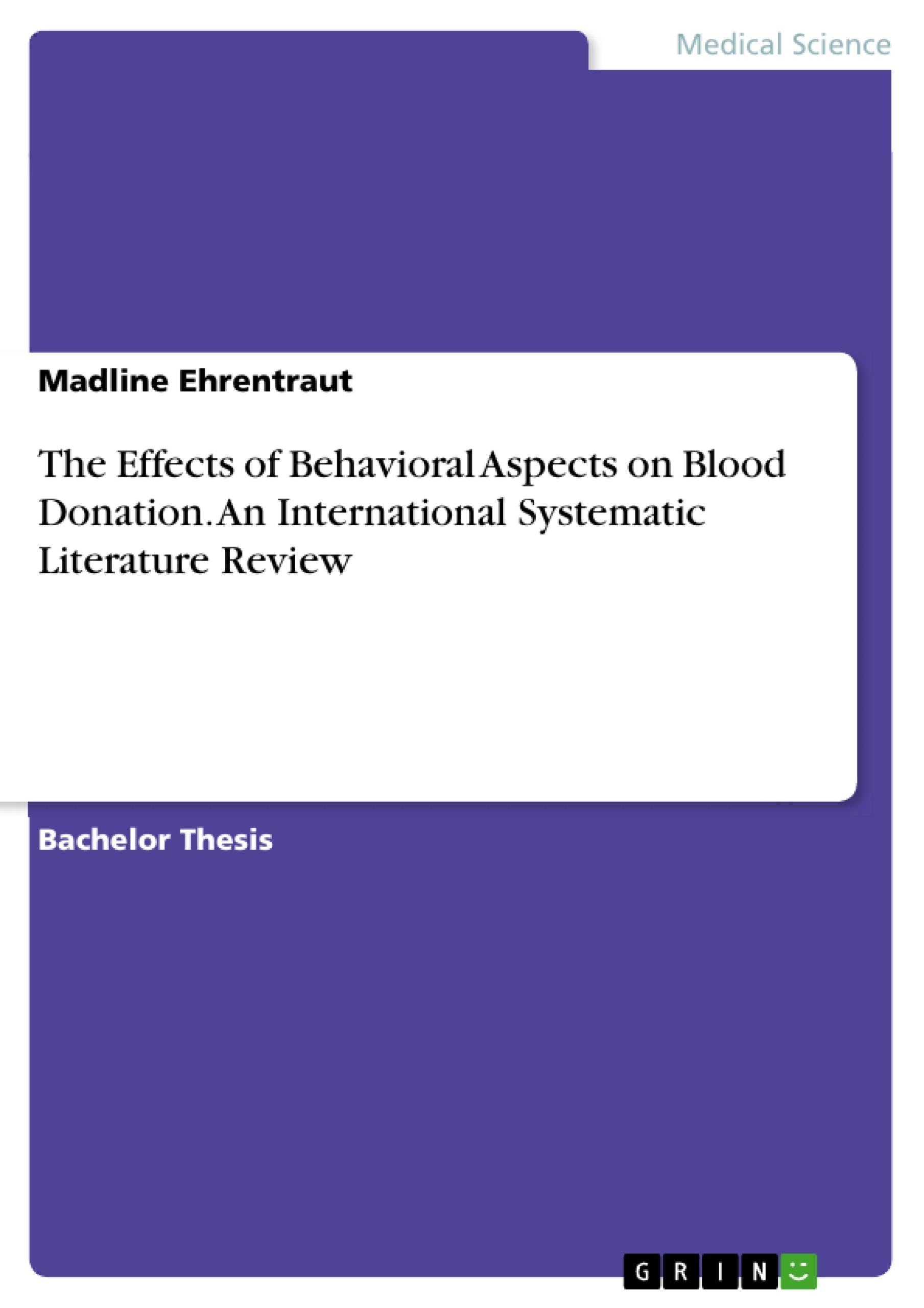This thesis aims to offer a comprehensive understanding of the multifaceted factors that drive blood donation, by dissecting existing international literature and considering various research categories, thus painting a detailed landscape of the current insights in this field.
Blood is a valuable and irreplaceable healthcare resource used in various medical services ranging from surgeries and childbirth to treating cancer and other blood diseases. Despite its importance, its supply precariously relies on voluntary donations. By taking a systematic international approach to the existing literature, this thesis endeavors to report and comment on its findings unbiasedly and inclusively. It borrows six categories of existing research from previous scholarship: (1) Theory of Planned Behavior, (2) prosocial motivation, (3) affective expectations, (4) donor site experience, (5) past donation behavior, and (6) donor demographics. A combination of phrases and Boolean operators was queried to various databases, and the subsequent findings were then systematically whittled down to 22 relevant works. These studies can be thought of as driven by three goals: 1) explaining what motivates the act of donation, often in a specific sample used to describe a local or national majority population, 2) understanding the motivations for repeat donation, or 3) exploring the motivations of ethnic minority populations with lower donation rates than the majority. These studies often employed the Theory of Planned Behavior and found that perceived control, external and internal was important in crafting donation intentions. Attitudes, especially those about the possible emotional results of donation, were also important. Among those considering prosocial motivations, barriers related to expected pain, fainting, or inconvenience hold potential donors back. However, some authors argued that highly motivated individuals could overcome barriers related to external control. Adverse reactions to donations are both a source of anxiety for non-donors and a reason for some donors to lapse. Affective expectations are related to those fears and experiences. Demographics have some impact, especially with women appearing more motivated to donate and more likely to express concerns about fainting. [...]
Inhaltsverzeichnis (Table of Contents)
- Abstract
- List of Abbreviations
- List of Tables
- List of Figures
- Introduction
- Medical Donation: Blood
- Global Overview and Trends in Blood Donation
- Conceptual Background
- Behavioral Theory
- Blood Donation Behavior
- Method
- Search Strategy
- Study Selection
- Data Extraction
- Quality Description
- Results
- Studies Exploring Motivations in General
- Studies Exploring Motivations for Repeat Donation
- Studies Exploring Motivations of Ethnic Minority Populations
- Discussion
- Conclusion
Zielsetzung und Themenschwerpunkte (Objectives and Key Themes)
This thesis aims to provide a comprehensive overview of the behavioral aspects influencing blood donation by conducting a systematic international literature review. By analyzing existing research, the study seeks to identify key factors that motivate or hinder individuals from donating blood, particularly focusing on motivations for both initial and repeat donations, and the unique challenges faced by ethnic minority populations.
- Motivations for Blood Donation
- Repeat Donation Behavior
- Blood Donation in Ethnic Minority Populations
- The Role of Perceived Control and Attitudes in Donation Intentions
- The Impact of Affective Expectations and Donor Site Experiences on Donation Behavior
Zusammenfassung der Kapitel (Chapter Summaries)
The introductory chapter provides a general overview of blood donation as a vital healthcare resource, highlighting its importance and dependence on voluntary contributions. It also examines global trends and challenges related to blood donation.
Chapter 2 delves into the conceptual background of blood donation behavior, exploring key theoretical frameworks such as the Theory of Planned Behavior (TPB) and prosocial motivation. It discusses the factors influencing donation intentions, including perceived control, attitudes, and subjective norms.
Chapter 3 details the methodology employed in the systematic review. It outlines the search strategy, study selection criteria, data extraction process, and quality assessment methods used to ensure the reliability and validity of the findings.
Chapter 4 presents the results of the systematic review, focusing on studies exploring motivations for blood donation across different contexts. It examines studies that investigate general motivations, factors influencing repeat donation, and the specific challenges faced by ethnic minority populations.
Schlüsselwörter (Keywords)
This thesis revolves around the key concepts of blood donation, behavioral aspects, international systematic literature review, Theory of Planned Behavior, prosocial motivation, affective expectations, donor site experience, past donation behavior, and donor demographics. The research explores factors such as perceived control, attitudes, barriers, and ethnic differences in influencing blood donation intentions and behavior.
- Citation du texte
- Madline Ehrentraut (Auteur), 2023, The Effects of Behavioral Aspects on Blood Donation. An International Systematic Literature Review, Munich, GRIN Verlag, https://www.grin.com/document/1394650



